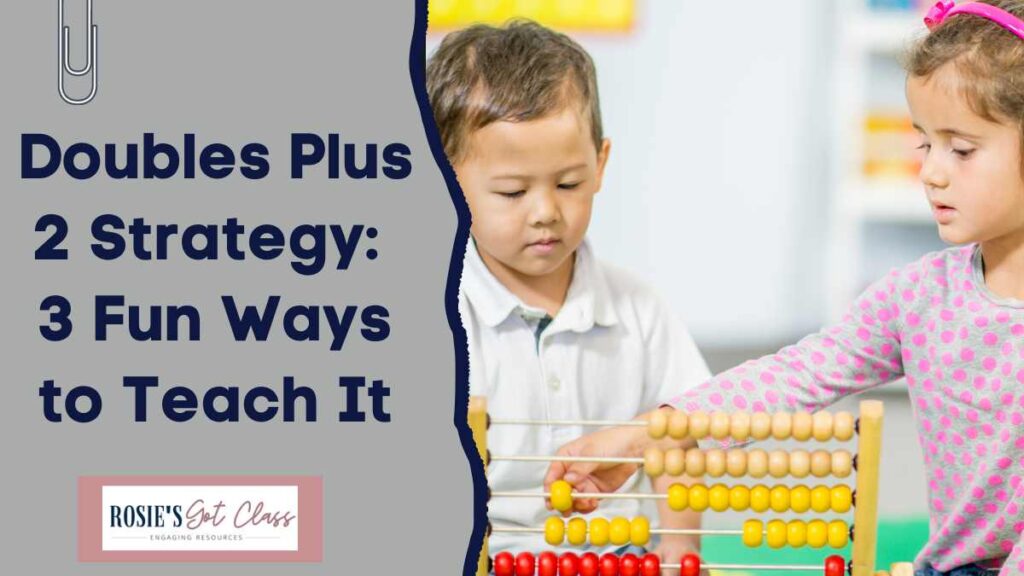
Have you heard of the doubles plus 2 addition facts? Sometimes the name is shortened slightly to the doubles plus 2 facts. We can use these facts to teach our students addition strategies. Teaching strategies to solve problems help our students develop number sense and build flexibility in thinking about relationships with numbers. One strategy is called the “doubles plus two” strategy. It is a helpful tool for solving addition problems where the two numbers are separated by two on the number line. Learning addition facts is an important step for young children in first and second grade because it builds a strong math foundation.
Have you ever asked yourself how to build math fact fluency? Our students need time and practice to learn their addition facts. Games can be used for addition facts practice to help your students develop fact fluency. This addition Bingo game helps your students practice adding two to numbers within 20. It is simple to prep, and you can use it as a math center today. Put your name and email address in the boxes and then check your email for this fun and engaging math activity.
What is a Doubles Plus 2 Fact?
A doubles plus 2 fact involves two numbers that are two apart on the number line. For example, when you see 4 + 6, you can recognize it as a doubles plus two fact because 4 and 6 are separated by two. If you count by twos, starting from 4, you would say “4” and then “6” which helps you see that this is a doubles plus two fact.
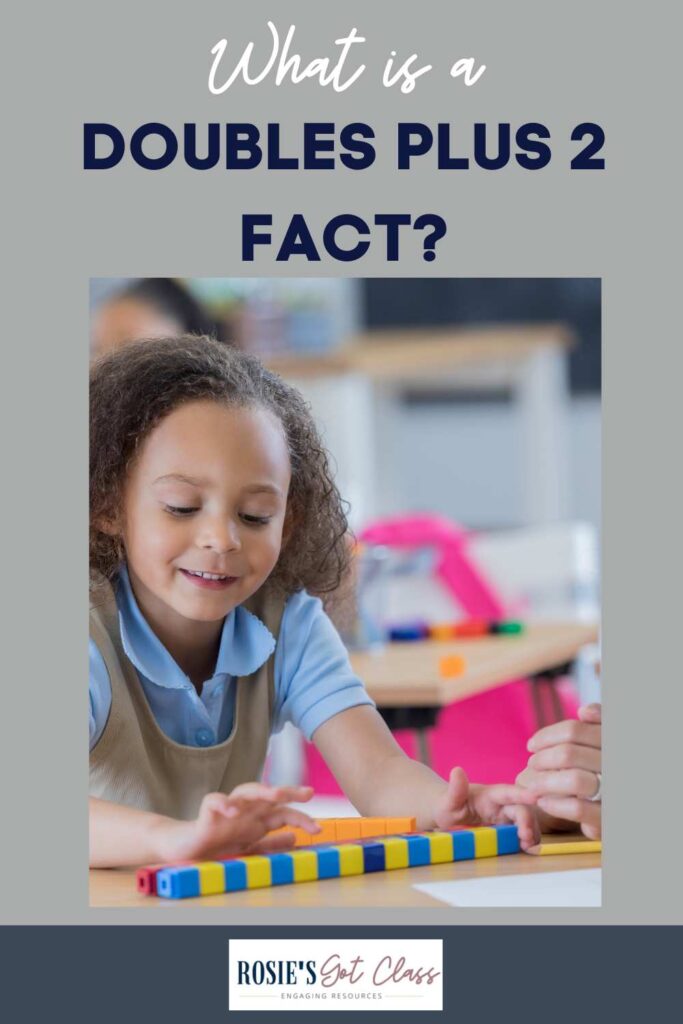
To solve doubles plus two facts, we use what some people call the “Monkey in the Middle” strategy. Use a number line to show the two numbers 6 and 8. I like to use the number line to find the sum of 14. Then I move on to discussing what number is in the middle of these two numbers. In this case, the middle number is 7. Then we talk about doubling 7 which gives us 14. We are using our addition facts doubles knowledge that we have been practicing.
It can be really easy to just show your student this example and then move on, but we need to talk about why this works to help strengthen number sense. I love showing another example using odd numbers to see if it only works with even numbers. Then we might try 5+7 and work through the same process. We discuss why this works. I love hearing their thinking to explain that you use one from the larger number to add to the smaller number to make them even or what we call a double.
After we have talked about this, I like to name the number in the middle as the “monkey in the middle.” This is a game my class likes to play. If you aren’t familiar with this game, it is played with three people. They stand in a line and the two outside players toss a ball back and forth. The person in the middle is called the monkey. The two outside players try to prevent the monkey from intercepting the ball. If your students don’t know how to play this game, you should probably show them how to play it so this strategy makes sense.
This is a great strategy because it lets students use the addition facts doubles they are already familiar with and apply it to new problems. They also love calling it “Monkey in the Middle!”
Model First with Ten Frames
When I first introduce the doubles plus two strategy, I like to use ten frames and manipulatives. This visual model helps students really see what’s happening. Here is how I would model 6+8.
1. Begin with the double of the smaller number and double it. I take out two ten frames and show six manipulatives on each frame that are all in the same color to represent 6 + 6. The students can easily see two groups of six.
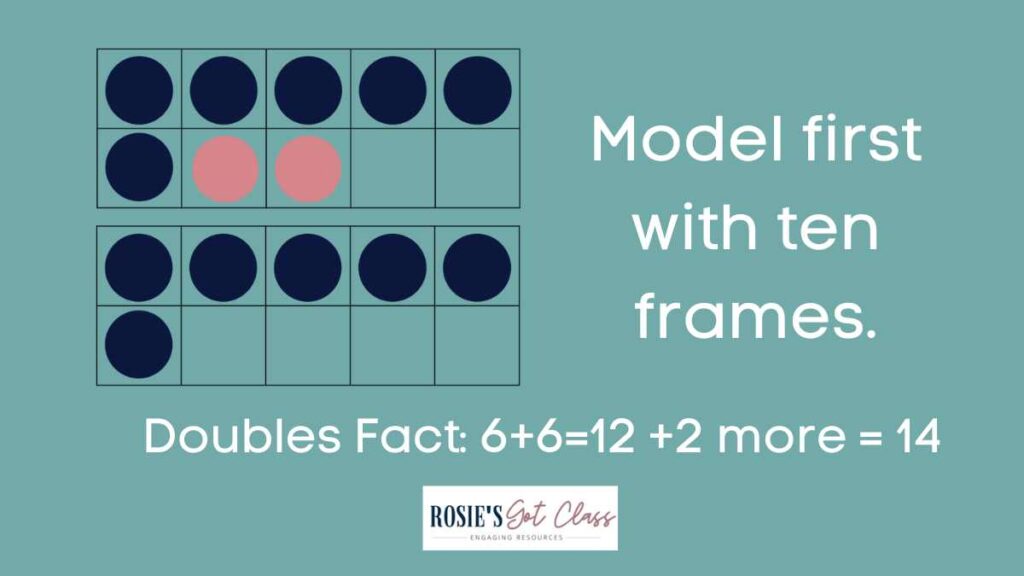
2. Now I move to 6 + 8. I add two more manipulatives in a different color to one of the ten frames. This helps students visualize that we’re starting with the double fact (6 + 6), and then adding two more to get 6 + 8. Then I take one of the different colored manipulatives to add to the other ten frame. This shows the “Monkey in the Middle” strategy because I now have made a doubles fact.
3. I continue modeling more examples. For example, I’ll use 4 + 6, and students will quickly notice the pattern. First, we start with the math facts doubles of 4 + 4, and then we add two more to get 4 + 6. Then we make it into “Monkey in the Middle.” Using different colors makes it easy for students to see the doubles and the extra two being added.
Practice with Manipulatives
Once the students have seen the doubles plus two strategy modeled, it’s time to let them practice with manipulatives themselves.
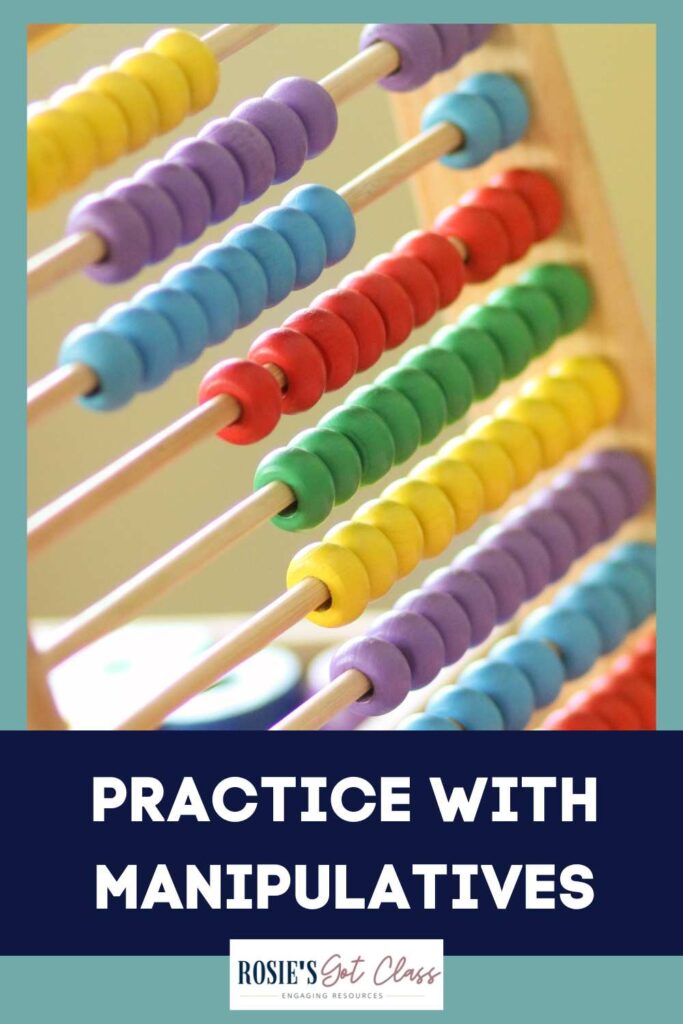
1. Give each student 2 ten frames and manipulatives. Students can use items such as Unifix cubes, small erasers, or two-colored counters. First, they’ll model a doubles fact, such as 5 + 5. They should place five manipulatives of the same color in each of their ten frames.
2. Have them add two more manipulatives. Now they’ll model the doubles plus two fact of 5 + 7. They place five manipulatives of one color in each ten frame and then add two manipulatives of a different color. They make it into “Monkey in the Middle.” This allows them to clearly see the two extra that are being added to the doubles fact and helps them develop flexibility with numbers.
3. Next, practice with more examples. Encourage your students to try out different doubles plus two facts such as 3 + 5 or 7 + 9. This hands-on practice makes the concept more concrete and fun for them.
Practice Doubles Plus 2 with Drawing and Writing
Next, we move to the representational phase and have students draw their ten frames and write the equations. Drawing helps solidify their understanding because they’re representing the math visually.
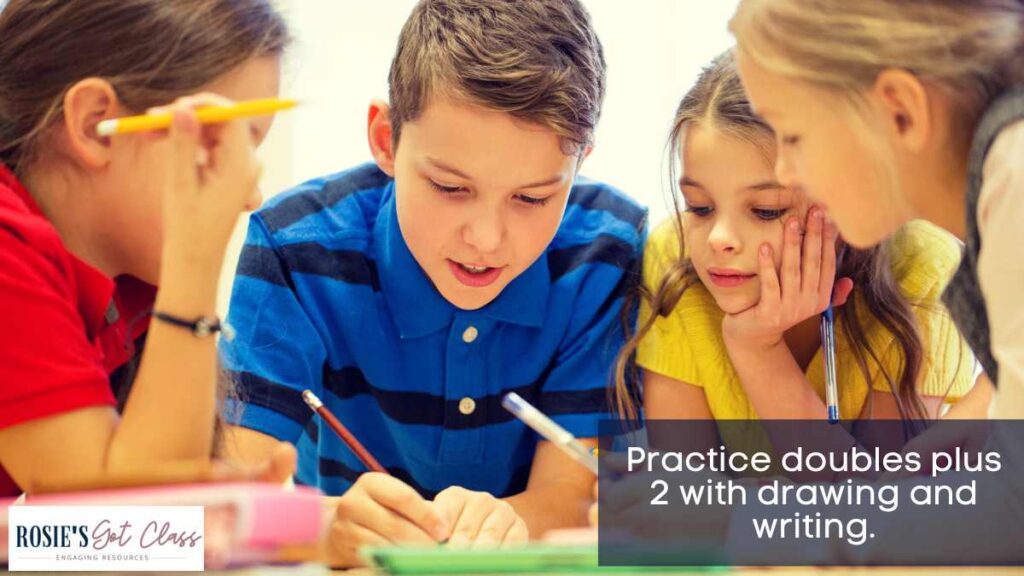
1. I like to use white boards or erasable boards with ten frames to practice this step. Draw the doubles fact. Students start by drawing a doubles fact such as 4 + 4. They use one color to draw four dots in each ten frame.
2. After they draw the double fact, they add two more dots in a different color to show the doubles plus two fact. Now they’ve modeled 4 + 6 visually. Then I like them to erase one of the two they have drawn on one of the ten frames and add it to the other ten frame to make the “Monkey in the Middle.”
3. Finally, I have students write the equation to match what they’ve drawn. In this case, they’d write “4 + 6 = 10.”
A Different Approach to Doubles Plus 2
After teaching the doubles plus two strategy, I like to show students another way to solve these problems by doubling the bigger number and subtracting two.
For example, if we’re working with 6 + 8, we could double 8 (because it’s the bigger number) to get 16. Then we remove two manipulatives to get back to 14. This approach gives students more flexibility in how they solve addition problems. Just like before, I model first, then allow students to practice with manipulatives, and finally have them draw and write the equation.
Help Students Choose The Best Strategy
Once students are comfortable with both methods, I encourage them to choose the strategy that works best for them. Some students might prefer finding the middle number and doubling it, while others might find it easier to double the bigger number and subtract two. What’s important is that they understand they have options and can use the strategy that feels easiest to them.
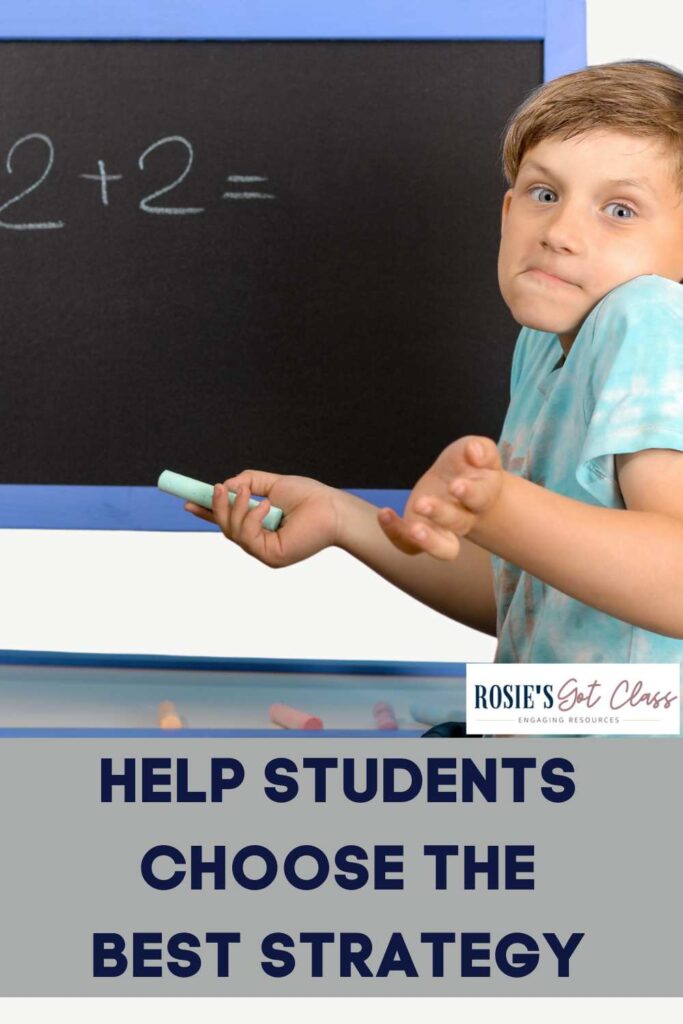
Make it Fun with Manipulatives
To keep things engaging, I like to use fun manipulatives such as Unifix cubes, small erasers, or two-colored counters. These small changes can make math practice feel more like a game. You can also be creative and use something like large white beans and pretend they are ghosts during Halloween time or use black beans as ants in the spring. Your students will love the extra fun!
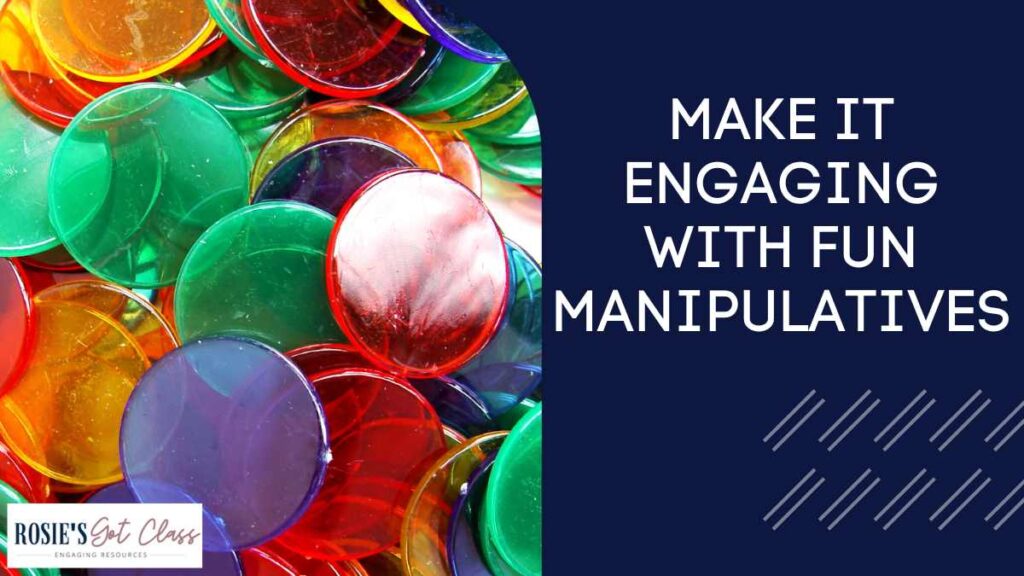
In conclusion, teaching the doubles plus two strategy is a great way to help 1st and 2nd graders build confidence in their math facts learning and addition skills. By modeling with ten frames, practicing with manipulatives, and drawing the equations, students gain a solid understanding of this strategy. They also have fun as they develop addition facts fluency and strengthen their number sense.
Here are some other articles that you might like.
Best Way to Teach Monkey in the Middle
Addition Fact Fluency


